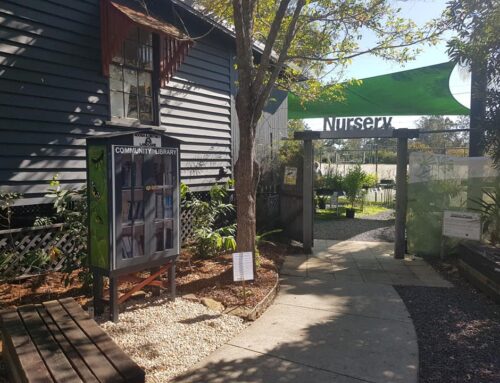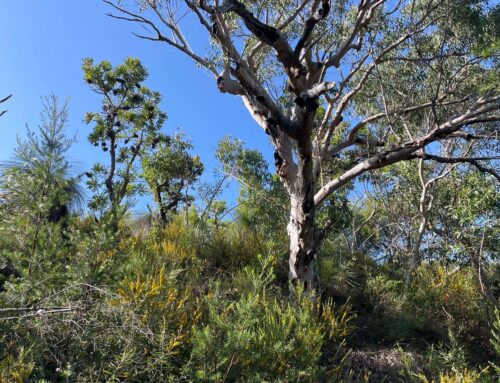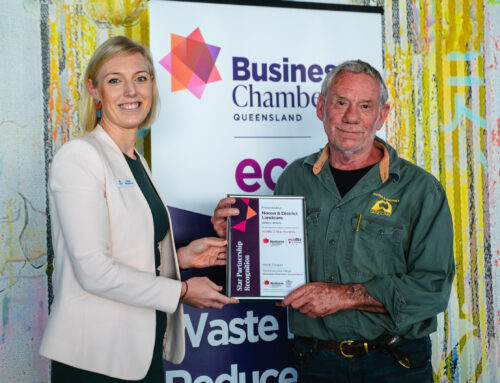In our last newsletter we touched on a case of garden waste dumping in a bushland area we have been working on recently. This sparked conversation amongst our team about some of the key issues with garden waste disposal and weed dispersal, giving inspiration for this article.
Thoughtful disposal of plants
Whether you have a neglected house plant or cleared out the chaos of an overgrown garden, some of you may be asking (or should be asking) yourself, how should I dispose of this plant material?
To help you with this question, we have listed some of the common weed species that should NOT be disposed of as normal garden waste. Please note that this is not a complete list. We have only listed some common high-risk species.
Maderia Vine (Anredera cordifolia) – All parts of the plant have the potential to regenerate if not appropriately disposed of. This is a high risk and priority weed species. Hand removal of plant material – dispose of it in the general waste bin. Herbicide control – all plant material can stay in-situ. Herbicide treatment and manual removal will likely require repeated treatment for effective control.
Singapore Daisy (Sphagneticola trilobata) – All parts of the plant have the potential to regenerate if not appropriately disposed of. This is a high risk and priority weed species. Hand removal of plant material – dispose of it in the general waste bin. Herbicide control – all plant material can stay in-situ. Herbicide treatment and manual removal may require repeated treatment for effective control.
Syngonium – All parts of the plant have the potential to regenerate if not appropriately disposed of. Garden waste dumping is the primary method of dispersal of this weed into bushland areas. Hand removal of the plant – dispose of it in the general waste bin. If using herbicide control – all plant material can stay in-situ. Herbicide treatment and manual removal may require repeated treatment for effective control.
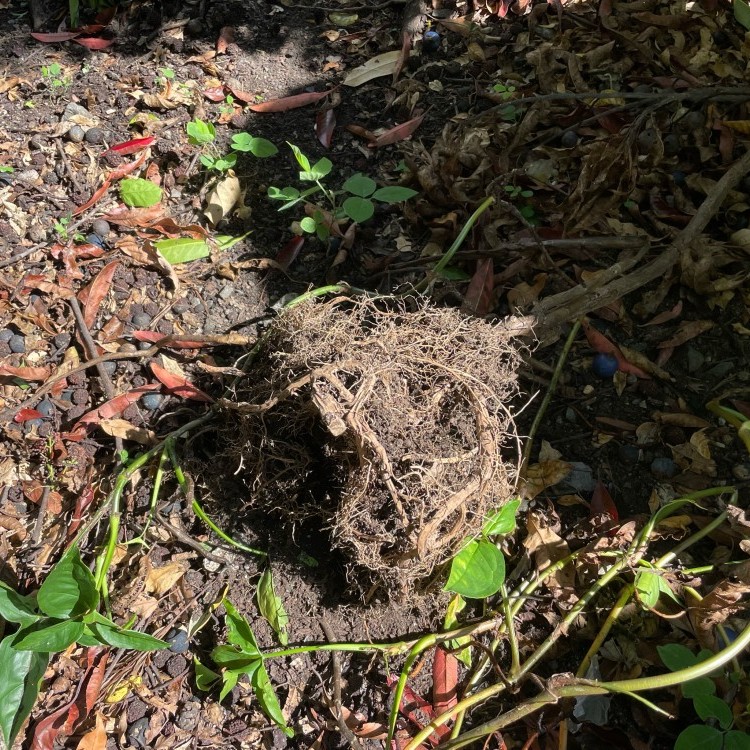
Syngonium dumped on the edge of a local bushland reserve.
Rubber Plant and all other non-native or endemic fig species – Fruit, root and stem material have the potential to regenerate if not appropriately disposed of. Small plants can be disposed of in the general waste bin. For larger trees, the cut and dab method with herbicide is advised. The detached stem base must be off the ground to reduce risk of reshooting.
Mothers in law tongue (Dracaena trifasciata) – Leaf and root material have the potential to regenerate if not appropriately disposed of. Garden waste dumping is the primary method of dispersal of this weed into bushland areas. Dispose of it in the general waste bin.
Mother of Millions (Bryophyllum delagoense)– Leaf, stem and root material have the potential to regenerate if not appropriately disposed of. Garden waste dumping is the primary method of dispersal of this weed into bushland areas. Dispose of it in the general waste bin.
Creeping Inch Plant and similar species (Tradescantia spp.) – Leaf, stem and root material have the potential to regenerate if not appropriately disposed of. A common garden escapee. Dispose of it in the general waste bin.
Devils Ivy (Epipremnum aureum) – Leaf, stem and root material have the potential to regenerate if not appropriately disposed of. Dispose of it in the general waste bin.
Fishbone fern (Nephrolepis cordifolia) – Rhizomes, stolons and spores on the leaves can regenerate or propagate if not disposed properly. Dispose of it in the general waste bin.
Asparagus fern (Asparagus aethiopicus) – The root system (crown) is very robust and readily regenerates if not appropriately disposed of. Dispose of it in the general waste bin. Fronds can be cut off and left to decompose on site if no fruit is attached.
Nut grass (Cyperus rotundus) – Bulbs, roots, rhizomes have the potential to regenerate if not appropriately disposed of. Dispose of it in the general waste bin.
Why do we recommend disposal of weed material in the general waste bin? This disposal method guarantees deep burial of the material, which reduces the risk of viable plant material spreading and propagating any further. Material placed in the green bin may be inadvertently spread to new areas via the production of mulch.
Dealing with troublesome weed waste
No matter which weed you are dealing with it’s great to take time to consider the best method of disposal based on its regeneration capabilities and risk to bushland ecology. Getting to know your weed species is important to stay one step ahead, particularly understanding how they disperse and propagate.
Generally, you should avoid removing weed species that have fruit or seeds (particularly seeds that have a hard center) present. If feasible, remove and bag seeds and fruit prior to removing the plant, disposing this material in the general waste bin. Alternatively, you can time the removal of the weed species prior to fruiting and seeding. If you don’t have the means to do either, just note that there is a risk of reemergence where the plant is removed. Monitor the site and treat or remove reemergence of weeds before becoming mature.
Leaving the weed material on site, where you have hand weeded is a common practice. For many weeds its best to ensure the root system is off the ground to reduce risk of reshooting. You can achieve this by leaning it on a nearby tree or piling a few bits of weed material against each other to keep the roots elevated.
For some weed species, solarization can be a viable method to help manage infestations and disposal of weed material. This has been trialed for Singapore Daisy locally. Solarization works by heating up the topsoil profile to temperatures that kill or debilitate weed seeds and seedlings, while also blocking out sunlight, inhibiting photosynthesis. This method is best suited for soft herbaceous weed species like forbs and grasses.
Commonly the weed material is removed, piled together, and covered with thick black plastic, or the weed area is covered in-situ with the black plastic. The edges require weighting to secure the plastic and reduce sunlight getting under. It is important to note that if you place the plastic over a weedy patch, everything will die under the plastic, including grasses. We recommend only practicing this method over small areas to reduce soil exposure and erosion risks. Planting of groundcovers or sowing grass seeds will be required once solarization is completed.
A minimum of 6 months is recommended for solarization of weed species such as Singapore Daisy. Data of solarization duration and frequency isn’t available for many weeds, so experiment with the duration of solarization.
Solarization can also complement other methods, like manual removal or herbicide treatment. You may solarize first and follow up with either treatment if small areas of the weed regrow. This can help reduce labour and herbicide used on the site.
Solarisation can also help reduce large volumes of plant material to dispose of in the general waste bin.
Some weed species can be placed in a bucket of water and ‘drowned’. This can rapidly decompose plant material. Again, this method is more suitable for herbaceous weeds and grasses. There is no standard timeframe for soaking the plant material, but many resources suggest up to 2 months or more. This method is not suitable for high-risk weeds or fibrous and woody weeds.
Many gardeners use the decomposed plant liquid as a fertilizer. Check out this weed tea fertilizer guide for more information Weed Tea Fertiliser – Gardening Australia (abc.net.au)
Composting weeds are only suitable if you are using a ‘hot’ composting system. To ensure that weed seeds or other potential propagating material of the plant are destroyed, temperatures of 60-65 degrees Celsius are required for several days. Composting high-risk weeds or weeds that readily propagate by root, stem of leaf material is not advisable. Also avoid adding weed species with large amounts of fruit and seed on the plant.
Check out this hot compost method guide for more information How To Make HOT Compost
Council Green Waste Management
Our local council’s provide garden waste disposal through the Garden Waste Bin service and garden waste drop off at resource recovery facilities across the region. As stated in the Sunshine Coast Resource Recovery Strategy 2023, green waste goes ‘through a decontamination process to remove any contamination such as plastics, treated timbers, metal or non-organic objects. Once the materials have been pre-processed, they are mulched and screened to produce mulches suitable for re-use.’ We see this service as extremely important in helping divert waste from landfill and reduce our greenhouse emissions. However, we have to highlight that this method doesn’t guarantee that weed propagation material will be destroyed. As a result, there is a risk of dispersal of certain weeds species.
We advise anyone using these services to please avoid adding the above listed weeds to the garden waste bins or garden waste drop off points and avoid adding weed seed and fruit material.
It is great to see many councils planning to transition their garden waste management to food organic / garden organic (FOGO) service, which will have these organic materials composted. This will likely provide us with a little more confidence that weed propagation material will be destroyed and dispersal risk is significantly reduced.
To learn more about our local garden waste disposal visit:
Noosa Council: www.noosa.qld.gov.au/environment-waste/waste-recycling
Sunshine Coast Council: www.sunshinecoast.qld.gov.au/living-and-community/waste-and-recycling
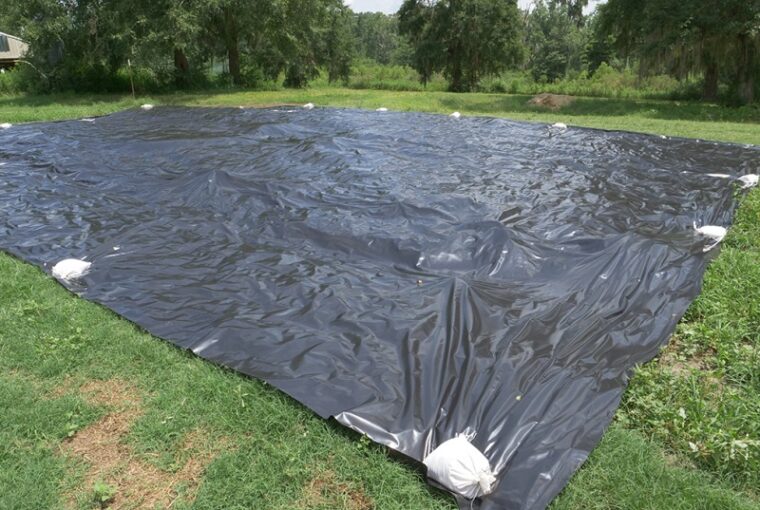
Black plastic tarp used to reduce weed cover in vegetable production.
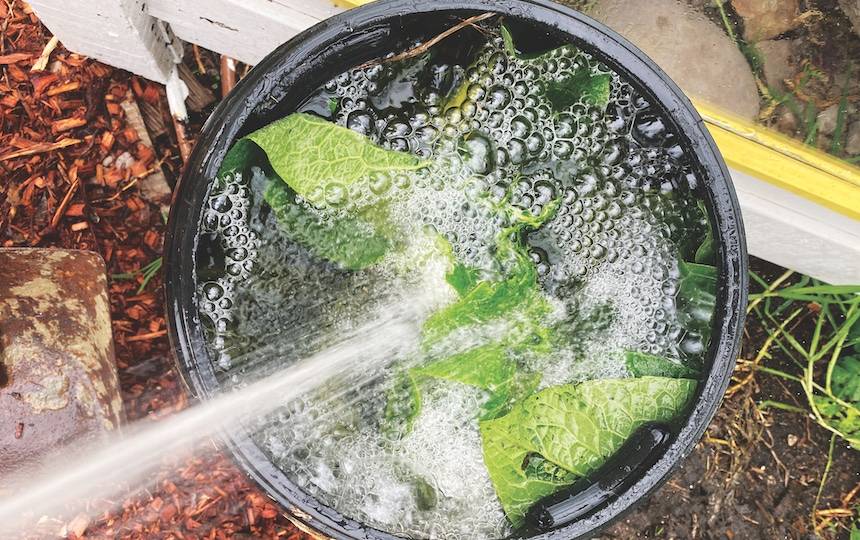
Submerging weeds in water to rapidly decompose the plant material and reduce viability of propogation material. (photo: Pip magazine)
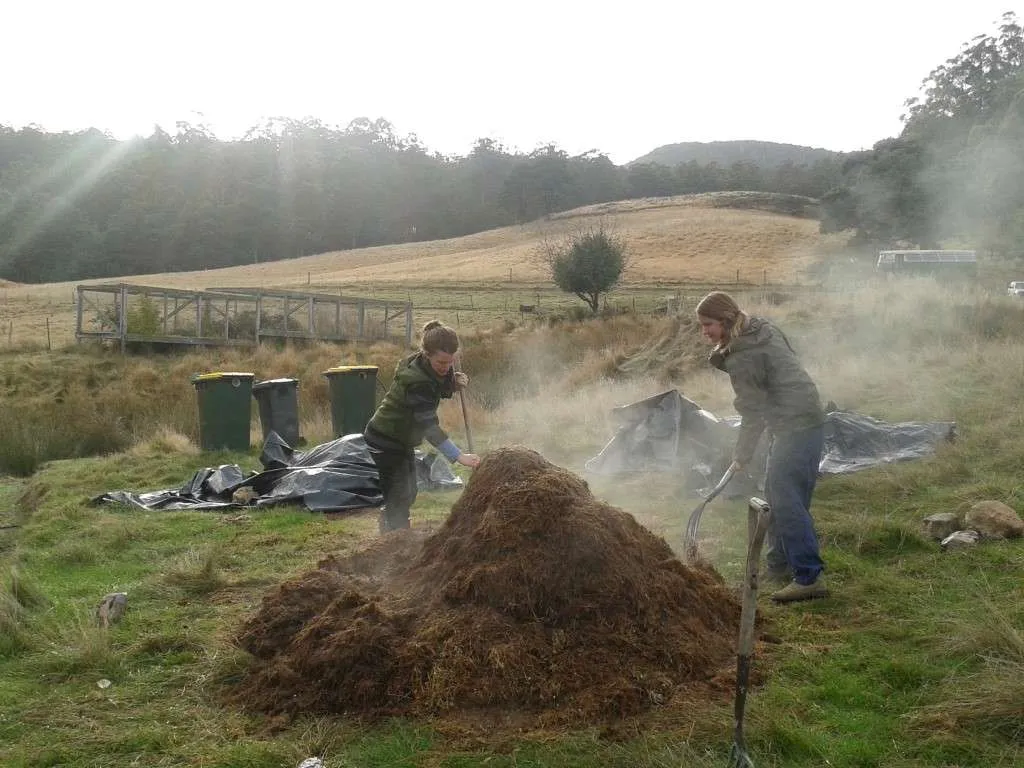
Hot compost pile (photo

